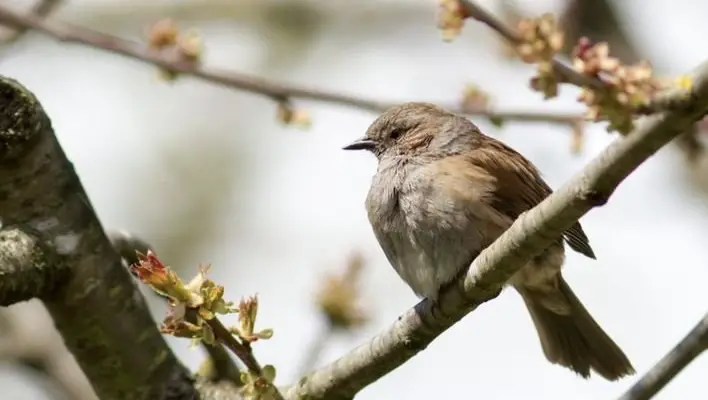The dunnock is a small bird found in gardens and parks nationwide. However, what classification do dunnocks fall under? Common or rare?
The dunnock is a fairly abundant bird species. The IUCN estimates that there are between 9 – 16 million dunnocks present in the wild. The bird is not considered to be threatened or endangered. This means that the bird is present in large numbers.
Based on the information above, the IUCN has determined that dunnocks are common birds. They have a large geographic range and they are present in large numbers. While they may not be as abundant in some areas, they can still be found in large numbers worldwide. They are often spotted in backyards and parks, so it would appear that they are not endangered or at risk of becoming extinct. In addition, they are not considered rare birds. They reside in three continents and have a large population size.
Are Dunnocks Common Or Rare In The UK?
There are an estimated 2 – 2.5 million pairs of dunnocks in the UK. However, in the UK conservation status, they have been placed in Amber, as there was a decline in numbers by about 25-50% in the 1970s – 1990s, sadly due to the loss of woodland, air pollution, habitat loss, and decline in food supply.
How To Identify Dunnocks
Dunnocks usually reside in areas that have low to moderate levels of human disturbance. They are from the passerine birds’ species, which are a group of birds that encompasses most songbirds, and the family of Prunellidae. The term “dunnock” is used to describe several different species of sparrows in the United Kingdom. They are usually brown and grey in colour with some white on their undersides. Their wings are usually long and narrow, and they have long tails. They are small birds, measuring between 13-14cm / 5-6 inches in length, and weigh between 19-24g / 0.5-1 oz. Dunnocks are insectivores, meaning that they eat mostly insects. They will also eat some berries and seeds.
Interestingly, there is some regional variation when it comes to the dunnock’s abundance. That said, the question is, are they common or rare? This is a question that has been asked by many bird enthusiasts over the years.
What are common birds?
Common birds are typically widespread and have large populations. They are not considered to be at risk of extinction. They can be found in various habitats, including forests, grasslands, and wetlands. Some birds that are classified as common include the American robin, European starling, and house sparrow. Also, most bird species that are found in the IUCN’s least concern category would be considered common birds.
What are rare birds?
Rare birds are typically those that are not as common as other bird species. They might have a small population and/or reside in a specific area. They are found in various habitats, including forests, grasslands, and wetlands. They are at a higher risk of extinction than common birds. Some birds that are classified as rare include the ivory-billed woodpecker, red-cockaded woodpecker, whooping crane California condor, Harpy’s eagle, and Puerto Rican parrot. Also, most bird species that are found in the IUCN’s near-threatened, vulnerable, endangered, or critically endangered categories would be considered rare birds.
The range of the Dunnock
The dunnock has a large geographic range. The bird can be found in Europe, Asia, and Africa. In Europe, the dunnock is found in countries such as France, Spain, Portugal, Belgium, and the Netherlands. In Asia, the dunnock is found in countries such as China and Japan. In Africa, the dunnock is found in countries such as Ethiopia and Somalia. With a range that extends across three continents, the dunnock can be classified as a common bird.
What can we do to care for the Dunnocks?
The best way to help ensure that a dunnock does not become rare is to make sure that they have a safe habitat to live in and protect their habitat. We can help by creating bird-friendly gardens and providing shelter and food for these animals. If we see any signs of trouble for the dunnocks, we should report it to the appropriate authorities. Also, donating to organisations that focus on conserving these animals can help with their efforts. By doing these things, we can help make sure that they remain a common bird for years to come.
Conclusion
Dunnocks are common birds that can be found in Europe, Asia, and Africa. They have a large population size and are not considered to be rare. However, the are still in Amber in the UK conservation status, so we should still do our part to protect their habitat and make sure that they have a safe place to live. By doing these things, we can help keep dunnocks common for years to come.

